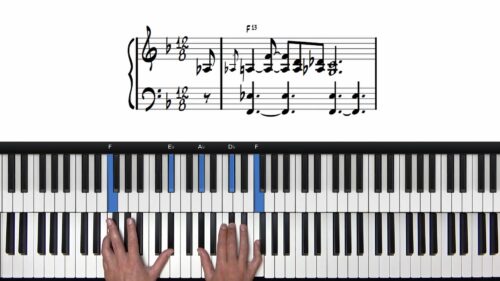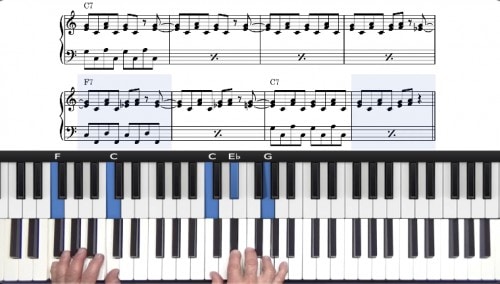Descending 6th Chord Fill
In this lesson we explore a variation on the descending fourth interval fill that we covered in the previous lesson. This time we will use a root position sixth chord in our right hand and all three notes in the voicing will descend chromatically.
6th Chord Fill vs. 4th Interval Fill
So what’s the difference between this fill and the 4th interval fill that we covered in the previous lesson? The key difference is that all 3 notes of the 6th chord fill descend down by half steps whereas in the previous lesson only the 2 lower notes in the inverted 6th chord are moving voices.
Passing Tones To Create Tension
An interesting aspect of the descending 6th chord fill is that our right hand plays the major 7th over a dominant 7th shell in our left hand. Whilst this clashes with the underlying harmony, it complements the dissonance created by the #9 and b13 and these tones are used as quick passing tones before resting in a more stable position.
Lesson Downloads
-
6th Interval Space Fillers File Type: pdf
Practice Tips
-
Start with the F7 and practice the descending 6th chord fill until you are comfortable with the movement. Repeat by isolating the same movement over the IV and V chords.
-
Play the fill in all registers of the piano so that you can visualise and execute this melodic idea in both the middle and upper registers.
-
The left hand 10th voicings create a balanced left hand accompaniment. If you have smaller hands play the root and 7th instead.
-
Practice this fill over the whole form and each time that you arrive at the end of the form incorporate one of the turnaround variations and remember to add variety in your turnaround choices.
-
Isolate these individual building blocks and in the upcoming lessons we will combine everything together in a more spontaneous and creative manner.







